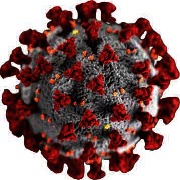The Pathogenesis of Coronavirus Disease 2019 (COVID-19): Evaluation and Prevention
- PMID: 32671115
- PMCID: PMC7352127
- DOI: 10.1155/2020/1357983
The Pathogenesis of Coronavirus Disease 2019 (COVID-19): Evaluation and Prevention
Abstract
Coronavirus Disease 2019 (COVID-19) has become a major health problem causing severe acute respiratory illness in humans. It has spread rapidly around the globe since its first identification in Wuhan, China, in December 2019. The causative virus is called severe acute respiratory syndrome coronavirus 2 (SARS-CoV-2), and the World Health Organization (WHO) named the new epidemic disease Coronavirus Disease (COVID-19). The incidence of COVID-19 continues to increase with more than three million confirmed cases and over 244,000 deaths worldwide. There is currently no specific treatment or vaccine against COVID-19. Therefore, in the absence of pharmaceutical interventions, the implementation of precautions and hygienic measures will be essential to control and to minimize human transmission of the virus. In this review, we highlight the epidemiology, transmission, symptoms, and treatment of this disease, as well as future strategies to manage the spread of this fatal coronavirus.
Copyright © 2020 Hayat Ouassou et al.
Conflict of interest statement
The authors declare that there is no conflict of interest regarding the publication of this article.
Figures


References
-
- World Health Organization. Laboratory testing for coronavirus disease 2019 (COVID-19) in suspected human cases. World Health Organization; 2020.
-
- Gorbalenya A. E., Baker S. C., Baric R. S., et al. Severe acute respiratory syndrome-related coronavirus: The species and its viruses – a statement of the Coronavirus Study Group. BioRxiv. 2020
Publication types
MeSH terms
LinkOut - more resources
Full Text Sources
Medical
Miscellaneous

